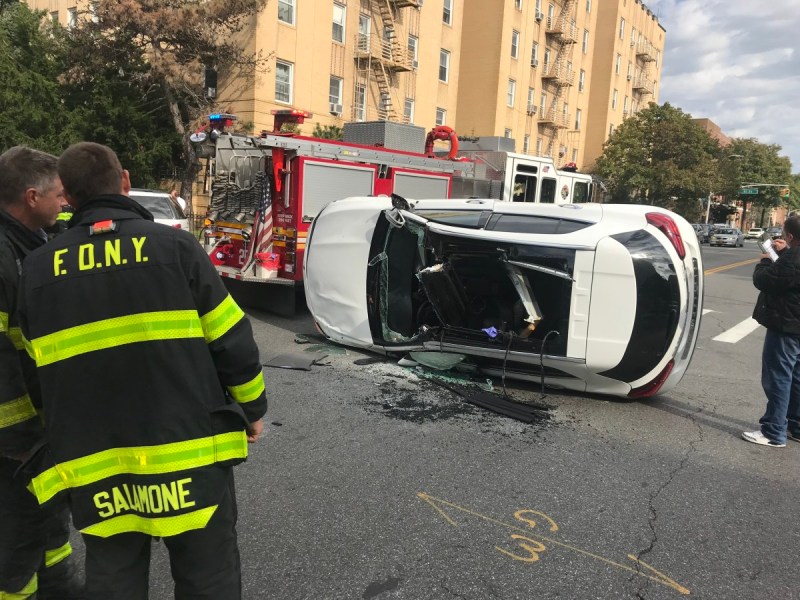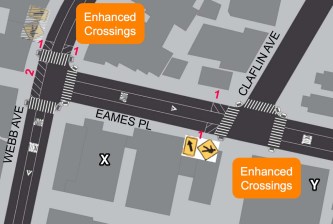DOT: Men in Big SUVs Are a Menace to Society


We have met the enemy and it is men.
The city Department of Transportation made good on a promise it made to Streetsblog last month to study car carnage “more granularly” and revealed on Friday that 80 percent of fatal crashes since 2018 were caused by male car drivers — and 41 percent of men who caused fatal crashes over the same period were driving pickups or SUVs.
That problem is getting worse, with men having caused 78 percent of the crashes between 2013 and 2017 — 32 percent of them in SUVs.
The Daily News first reported the 2013-17 stats late yesterday. Trottenberg reveled the update on Friday at the unveiling of a new ad campaign designed to get drivers to see the foolishness of their continued recklessness.
“The popularity of SUVs and light trucks are contributing to the increase in roadway fatalities in New York City and nationally,” DOT Commissioner Polly Trottenberg. “If you’re behind the wheel of one of those vehicles … you need to take extra caution. it has a lot more weight…poor visibility, it takes you longer to brake and it is harder to see around turns. Drivers of those vehicles need drive very carefully to compensate.”

Trottenberg debuted the “Was it Worth It?” public awareness campaign not far from where Bertin DeJesus was run over in his stroller and killed by the driver of a Ford F-250 pickup truck this week. Such a truck, Trottenberg pointed out, can weight four tons fully loaded and has a hood that is five feet high.
“I’m 5-foot-2, so basically you can barely see me if I’m standing in front of that truck,” the large-in-stature commissioner said.
Though she gave statistics, Trottenberg did not discuss the role that gender plays in why SUVs have become so popular nationwide. Men comprise 57 percent of SUV purchasers and 86 percent of truck purchasers, data show. Both styles of cars are heavily marketed to men. And both styles of cars have a disproportionate role in the rise in pedestrian deaths, which are up 50 percent nationally since 2009, according to the National Highway Traffic Safety Administration.
Nor did Trottenberg address one really big elephant in the room: the NYPD itself has been responsible for bad optics when it comes to SUVs: since 2015, the Police Department has purchased 2,361 SUV squad cars vs. 2,276 of the traditional sedan squad cars over the same period, according to information provided to Streetsblog by the Department of Citywide Administrative Services.
But that roughly even split has been accelerating towards the abyss: Over the last two fiscal years, the NYPD has acquired 689 SUVs vs. 463 sedans.
Road fatalities are up about eight percent this year, though overall have been dropping during the Vision Zero era.

The new $4-million “Was It Worth It?” campaign seeks to change that statistic with 23 billboards installed around the city, plus TV and print ads and ads on the backs of buses, designed to remind drivers that if they drive recklessly, they will not only ruin the lives of the people they hit, and the families of the victims, but also themselves. The campaign will run through the end of the year.
“We are trying to capture that deeply scarring moment — with the goal of preventing motorists from ever having to endure one,” Trottenberg said in a statement.
The agency also added:
While previous Vision Zero campaigns had focused mostly on the victims of traffic crashes, this campaign relies for the first time on the emotional experience of the motorist. The new ads explore and identify the key behaviors that contribute to roadway fatalities, which includes speeding, failure to yield, and distracted driving. By targeting motorists, the ads aim to provoke questions. That is, if some preventably dangerous driving behavior — say, driving a few miles over the speed limit, turning too quickly, or checking a text message — resulted in the loss of someone’s life, the driver would have to ask himself, “Was It Worth It?”
— with Vince DiMiceli
